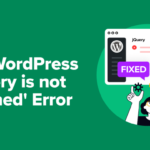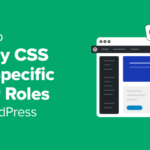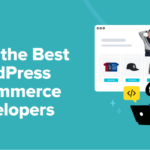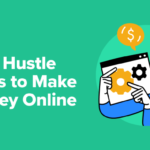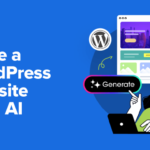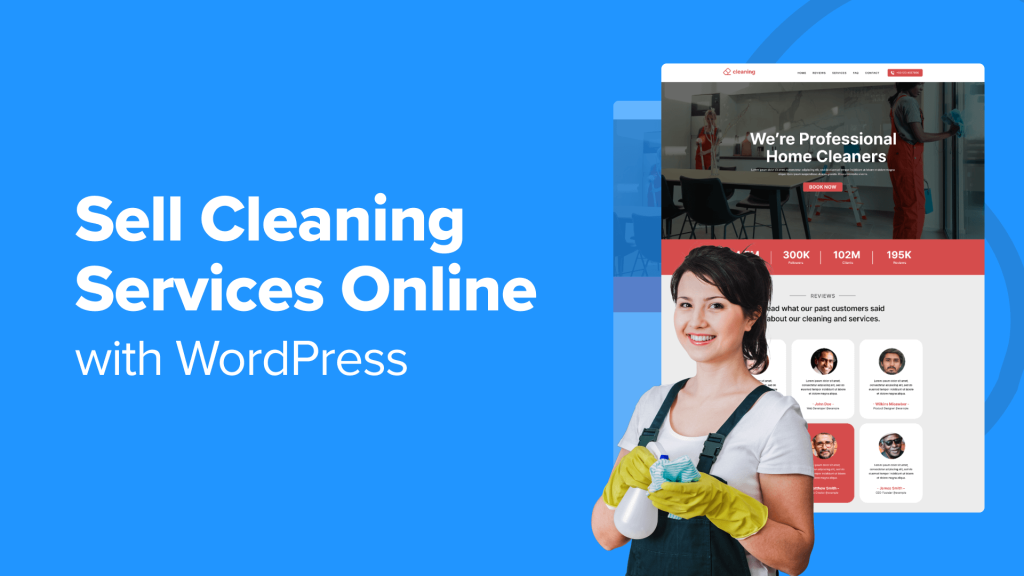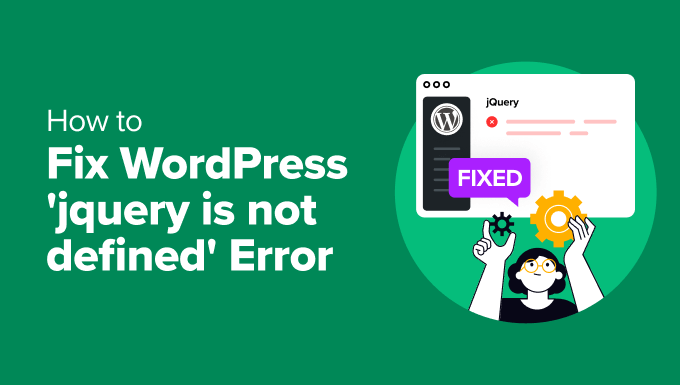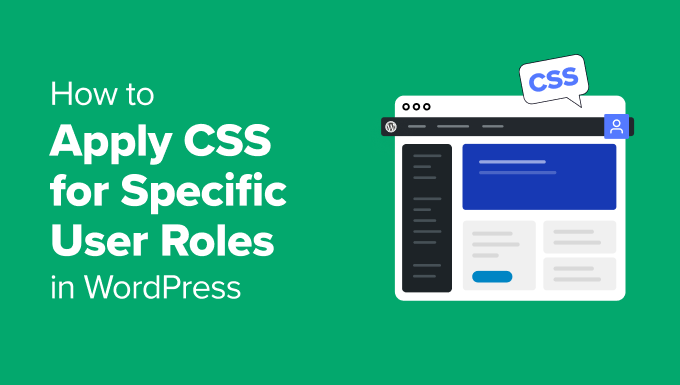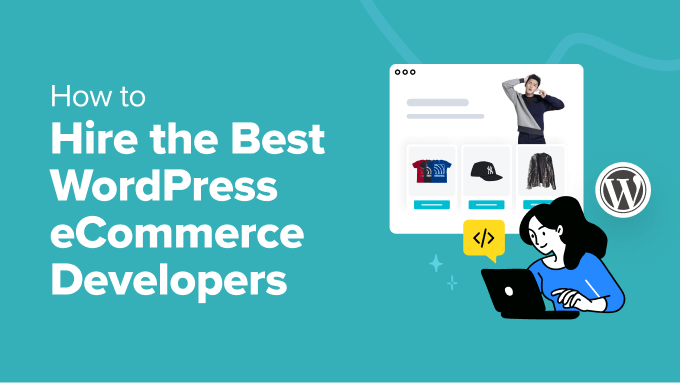Creating High-Converting Landing Pages on WordPress: Tips and Tools
Creating landing pages that convert visitors into customers or leads is essential for any business. With WordPress, you have a powerful platform that offers flexibility, customization, and a wide range of tools for building effective landing pages. In this article, we’ll dive into the best tips and tools to craft high-converting landing pages on WordPress.
## Introduction
Why Landing Pages Matter for Conversions
Landing pages are designed to guide visitors toward a specific action, like making a purchase or signing up. Unlike regular web pages, landing pages focus on one goal, reducing distractions and keeping the user’s attention on converting.
The Role of WordPress in Building Effective Landing Pages
WordPress is a great platform for creating landing pages due to its flexibility and access to countless plugins, themes, and customization options. Plus, it’s user-friendly, even for beginners, making it a preferred choice for businesses of all sizes.
## Key Elements of a High-Converting Landing Page
Engaging Headline
Your headline is the first impression visitors get. It should be clear, enticing, and communicate the value you’re offering right from the start.
Compelling Visuals and Media
Eye-catching visuals grab attention and make your landing page more engaging. Use high-quality images, videos, or graphics that support your message and brand.
Strong Call-to-Action (CTA)
A clear, persuasive CTA tells users what to do next. Use action-oriented language and make your CTA buttons stand out, both visually and in terms of wording.
Benefits-Focused Copy
Focus on the benefits your product or service provides, rather than just listing features. Show how it solves a problem or meets a need for the visitor.
Trust Signals and Social Proof
Trust signals, like testimonials, reviews, and security badges, help build credibility. Adding social proof can reassure users that others have benefited from your offering.
## Designing Your Landing Page on WordPress
Selecting the Right WordPress Theme
Your theme influences the look, feel, and functionality of your landing page. Choose a theme that’s lightweight, customizable, and responsive.
Importance of a Mobile-Responsive Theme
With more users accessing sites on mobile devices, a mobile-responsive theme ensures your landing page looks great and functions well on any screen.
Recommended Themes for Landing Pages
Some recommended WordPress themes for landing pages include Astra, Divi, and Elementor’s Hello theme, known for their simplicity and adaptability.
Utilizing WordPress Page Builders
WordPress page builders like Elementor and Beaver Builder allow for easy drag-and-drop customization, giving you control over every part of your landing page’s design.
Popular WordPress Page Builders
Popular options include Elementor, Divi Builder, and WPBakery, each offering different levels of customization and ease of use.
Pros and Cons of Different Builders
Elementor is known for its versatility and user-friendly interface, while Divi Builder offers unique design modules. WPBakery can be more challenging to use but is highly customizable.
## Top Tools for Optimizing Landing Page Conversions
A/B Testing Plugins for WordPress
Plugins like Nelio A/B Testing or Google Optimize help you test different versions of your landing page to determine which elements perform best.
Heatmap and Analytics Tools
Use heatmap tools like Hotjar or Crazy Egg to track where visitors click and scroll. Analytics tools provide data on visitor behavior, allowing you to adjust your design.
SEO Tools for Landing Pages
SEO tools like Yoast SEO and Rank Math ensure your page is optimized for search engines, helping it reach a larger audience.
## Best Practices for High-Converting WordPress Landing Pages
Streamlining Page Loading Speed
A fast-loading page is crucial for conversions, as slow speeds can lead to higher bounce rates. Compress images, enable caching, and minimize scripts to speed up loading times.
Focusing on User Experience (UX)
UX is key to keeping users engaged and moving toward conversion. Focus on simplicity and clarity in every aspect of your page design.
Simple Navigation
Limit navigation options to reduce distractions. A clean, straightforward layout makes it easier for visitors to follow the desired conversion path.
Intuitive Layout
Arrange elements in a logical order that guides visitors toward your CTA, making their journey from entry to conversion smooth and intuitive.
## Analyzing and Improving Conversion Rates
Setting Up Conversion Tracking in WordPress
Tracking conversions allows you to measure the success of your landing page. Tools like Google Analytics and Facebook Pixel can help you monitor and analyze performance.
How to Interpret Conversion Data
Look at metrics like click-through rates, bounce rates, and time on page to understand user behavior. Adjust elements based on this data to improve conversions.
## Conclusion
Building high-converting landing pages on WordPress requires a blend of design, content, and optimization. By focusing on the user experience, employing the right tools, and consistently analyzing your performance, you can create landing pages that drive conversions and boost your bottom line.
## Frequently Asked Questions (FAQs)
### What’s the best WordPress theme for landing pages? Popular themes like Astra and Elementor Hello Theme are ideal for landing pages due to their speed, flexibility, and mobile responsiveness.
### How can I track my landing page conversions? You can track conversions using tools like Google Analytics and Facebook Pixel, which offer insights into user interactions on your page.
### How do visuals affect my landing page performance? Visuals grab attention, keep users engaged, and can increase trust, all of which positively affect conversion rates.
### What tools should I use for landing page SEO? Yoast SEO and Rank Math are popular WordPress plugins that help optimize your page for search engines, boosting visibility.
### Can I use WordPress landing pages for PPC campaigns? Yes, WordPress landing pages are suitable for PPC campaigns, provided they’re optimized for quick loading, clarity, and a strong CTA.
## Additional Strategies for Building High-Converting Landing Pages on WordPress
Now that we’ve covered the basics of landing page creation and optimization, let’s dive into some additional strategies that can elevate your landing page performance and increase conversion rates.
### Leverage Scarcity and Urgency in Your Copy
When people feel like they might miss out on something valuable, they’re more likely to act. Using phrases like “limited time offer,” “only a few spots left,” or “offer ends soon” can create a sense of urgency. This approach, often used in e-commerce landing pages, encourages visitors to take immediate action instead of leaving the page and possibly forgetting about it.
### Use Personalized and Dynamic Content
Personalization has become essential in digital marketing, and it’s especially powerful for landing pages. Dynamic content allows you to tailor your landing page copy, images, and offers based on user behavior, location, or past interactions with your brand. Tools like OptinMonster and Elementor Pro offer dynamic content options, letting you create a more engaging experience that feels uniquely suited to each visitor.
### Adding Video Content to Boost Engagement
Video content is a highly engaging medium that can communicate your value proposition effectively. Videos can help explain complex products, showcase testimonials, or highlight key benefits in a quick and visually appealing format. When incorporating video, keep it brief and focused, and make sure it doesn’t slow down your page load speed.
### Crafting Landing Pages Specifically for Mobile Users
Mobile-first design is crucial, as a large portion of users will visit your landing page on a smartphone or tablet. When designing for mobile, prioritize a clean layout with easily clickable buttons, minimize text for faster readability, and avoid pop-ups or other elements that might disrupt the mobile experience. A good mobile experience can significantly improve your landing page’s conversion rates.
### Utilizing Retargeting to Bring Visitors Back
Not every visitor will convert on their first visit. Retargeting allows you to bring back visitors who showed interest but didn’t complete an action. Tools like Google Ads and Facebook Ads can help you set up retargeting campaigns that display ads to people who previously visited your landing page. Retargeting can remind potential customers of your offering and encourage them to return to complete their purchase or sign-up.
### Incorporate Chatbots or Live Chat for Immediate Support
Offering live chat or chatbot support on your landing page can significantly enhance the user experience. If visitors have questions or concerns, immediate access to answers can prevent them from leaving your page. Tools like Tidio or Drift integrate seamlessly with WordPress and provide real-time assistance, which can ultimately increase conversions.
### Emphasizing Benefits Over Features in Your Copy
When describing your product or service, make sure to focus on the benefits it provides rather than just listing features. For instance, instead of saying, “Our software has 24/7 customer support,” say, “Get help whenever you need it with our 24/7 customer support.” This slight shift in wording can make a big difference in how appealing your product appears to visitors.
### Testing for Peak Performance
Landing page optimization is an ongoing process. Use A/B testing (split testing) to test different versions of your headlines, CTAs, images, and colors to determine what resonates best with your audience. WordPress plugins like Thrive Optimize or Nelio A/B Testing make it easy to conduct these tests. This continuous testing process can help you identify which elements work best to improve conversions.
### Maintaining Consistency Across Ads and Landing Pages
If you’re driving traffic to your landing page through paid advertising, it’s important to maintain visual and messaging consistency between the ad and the landing page. When visitors arrive on your page and see the same language, offers, and images as in the ad, it reassures them they’re in the right place, increasing the likelihood of conversion.
### Build Trust with Transparent Privacy Practices
With rising concerns about online privacy, including a clear privacy policy and commitment to data security can help visitors feel more secure. Highlighting your privacy practices or adding links to your terms and conditions on your landing page assures users that their information is safe, which can boost trust and conversions.
## Final Thoughts on Enhancing Conversion Rates on WordPress Landing Pages
Creating a high-converting landing page on WordPress isn’t a one-time task—it’s a blend of strategic planning, continuous optimization, and understanding your audience’s needs. By focusing on essential design elements, using the right tools, and maintaining a seamless user experience, you can turn your WordPress landing pages into powerful assets for your business.
## FAQs on Creating High-Converting Landing Pages
### How long should a high-converting landing page be? There’s no one-size-fits-all answer, but aim for clarity over length. Short, concise pages work well for simpler offers, while more detailed pages with longer copy are suitable for complex products or higher-value services.
### Is WordPress the best platform for landing pages? WordPress offers a lot of flexibility and tools, making it a popular choice for landing pages. However, other platforms like Unbounce or Leadpages might be better suited if you prefer specialized tools without a CMS setup.
### Can I use the same landing page for different campaigns? It’s generally better to create unique landing pages tailored to each campaign’s audience, message, and goal. Personalized pages often result in better engagement and conversions.
### How often should I update my landing page? Updating your landing page every few months is a good practice. Analyze conversion data, test new elements, and refresh the page as needed to keep it effective.
### What’s the ideal number of CTAs on a landing page? Stick to one or two clear CTAs. Multiple CTAs can confuse users and reduce conversions. Keep your primary CTA visible and reinforce it as the visitor scrolls down.
## Advanced Tips for Creating High-Converting Landing Pages on WordPress
### Implementing Exit-Intent Popups to Capture Potential Leads
Exit-intent popups appear when a visitor’s mouse moves toward the top of the screen, indicating they’re about to leave. These popups can offer a discount, encourage email sign-up, or provide some other enticing offer to capture the visitor’s interest at the last moment. Tools like OptinMonster or ConvertFlow offer customizable exit-intent popups that integrate smoothly with WordPress, helping you recover potential conversions.
### Adding Countdown Timers for Limited Offers
Countdown timers are effective tools to create urgency. Whether it’s a special discount, product launch, or registration deadline, a countdown timer can nudge visitors to act before time runs out. Adding a countdown is especially useful on WordPress landing pages for promotions or events. Plugins like Evergreen Countdown Timer or WP Countdown Timer let you add dynamic timers that update based on individual visitor sessions, making the urgency feel more personal.
### Showcasing Case Studies and Success Stories
If you have real-life success stories or case studies, use them to build credibility on your landing page. Detailed examples of how your product or service has helped other clients can provide valuable social proof. Include testimonials, before-and-after results, or even quotes from well-known companies or figures if applicable. These success stories work like word-of-mouth endorsements, giving visitors a reason to trust and choose your offering.
### Using Multi-Step Forms to Improve Sign-Up Rates
For landing pages that require form submissions, breaking up long forms into multiple steps can improve completion rates. Instead of overwhelming users with many fields at once, multi-step forms reveal one part of the form at a time, making it feel more manageable. Plugins like WPForms and Gravity Forms support multi-step forms on WordPress and provide a smoother user experience for complex sign-ups.
### Implementing Scroll-Triggered CTAs
A scroll-triggered CTA appears once a user scrolls down to a specific part of the page, often near the end of the content. This tactic catches users who are already engaged with your content, providing a timely prompt to take action. For WordPress users, scroll-triggered CTAs can be added with tools like Elementor Pro or Smart CTA. It’s an effective way to keep your CTA in view without disrupting the flow of information on the page.
### Optimizing for Voice Search on Mobile
With the rise of voice-activated assistants like Siri, Google Assistant, and Alexa, optimizing your landing pages for voice search can give you a competitive edge. Voice searches are often phrased as questions, so consider integrating conversational, question-based keywords on your page. Tools like SEMrush and AnswerThePublic can help you find commonly asked questions related to your topic, making it easier to rank for voice searches.
### Creating Interactive Content for Deeper Engagement
Interactive elements such as quizzes, calculators, and surveys encourage user participation and increase engagement. For example, if you’re offering a health product, a short quiz to help users find the right product for their needs can make the experience more personalized. Interactive content keeps visitors on your page longer, boosting your chances of conversion. Plugins like Thrive Quiz Builder or Quiz and Survey Master are great for adding these features to WordPress landing pages.
### Building Trust with Transparent Pricing
If your product or service involves pricing options, displaying a clear pricing breakdown can make visitors feel more comfortable. Transparent pricing builds trust, particularly for e-commerce or SaaS products. Consider including a pricing table or comparison chart that shows different package options, features, and costs. Themes like Astra and plugins like Pricing Table by Supsystic can help you present pricing in a visually appealing way.
### Adding Clear Return Policies and Guarantees
When visitors know they’re protected by a return policy or satisfaction guarantee, they’re more likely to take the plunge. Consider offering a money-back guarantee or free returns if applicable. This added security can reduce buyer hesitation, especially for high-ticket items. Make sure your return policy is visible and easy to understand, ideally located near your CTA or pricing information.
### Leveraging Social Media Integrations
Integrate social media elements that let visitors share your landing page or offer on their social networks. Not only does this increase exposure, but it also acts as a form of social proof when users see others engaging with your brand. Many WordPress plugins, such as Social Snap and ShareThis, allow you to add share buttons or even show real-time shares and likes directly on your landing page.
### Monitoring Real-Time Analytics for Immediate Insights
Real-time analytics allow you to track visitor behavior as it happens, so you can make data-driven adjustments to your landing page. For instance, if you notice a high drop-off rate on a particular section, you can tweak it to make it more engaging. Google Analytics offers real-time insights, and plugins like MonsterInsights help bring that data directly to your WordPress dashboard.
## Advanced A/B Testing for Continuous Improvement
A/B testing isn’t a one-time task; it’s an ongoing strategy for landing page optimization. Advanced A/B testing involves not only testing individual elements like headlines and buttons but also testing entirely different layouts or value propositions. For example, one version could focus on product features, while another emphasizes customer testimonials. This kind of testing provides deeper insights into what resonates best with your audience.
## Conclusion
Building a high-converting landing page on WordPress is a multi-faceted task. From selecting the right tools and design elements to incorporating advanced techniques like exit-intent popups and A/B testing, there are numerous strategies you can use to improve conversions. Remember, a successful landing page isn’t just about flashy visuals or persuasive copy; it’s about creating a seamless experience that aligns with the visitor’s needs and motivations.
Keep experimenting, analyzing your data, and optimizing for better results. By staying attentive to user behavior and making continuous improvements, you can turn your landing page into a powerful driver of growth and engagement for your business.
## Additional Frequently Asked Questions (FAQs)
### What’s an effective way to add urgency to my landing page? Using countdown timers, limited-time offers, or scarcity-based messages can effectively add urgency and encourage visitors to take quick action.
### Are exit-intent popups effective for mobile users? While exit-intent popups work well on desktops, they’re less effective on mobile devices. Instead, consider time-based popups or scroll-triggered popups for mobile users.
### How can I personalize my landing page content? Dynamic content plugins like OptinMonster and Elementor Pro allow you to personalize content based on user location, behavior, or past interactions with your brand.
### What’s the ideal word count for a landing page? There’s no hard rule, but aim for enough detail to cover your value proposition clearly. Shorter pages work well for simpler offers, while more complex products may benefit from a longer, more detailed approach.
### How often should I run A/B tests on my landing page? A/B testing is an ongoing process. You should conduct new tests whenever you make significant changes to your page or if you see a drop in conversion rates. Monthly testing is a good frequency for most pages.
With these advanced tips and strategies, you’re now equipped to make your WordPress landing pages more engaging, persuasive, and ultimately, more effective in converting visitors. Happy optimizing!
## Advanced Techniques for Sustaining High Conversion Rates
Once you’ve set up your landing page and seen some initial success, the next step is ensuring it continues to perform well over time. Here are a few advanced methods for sustaining—and even improving—your landing page’s conversion rate.
### 1. Utilize Heatmaps to Understand User Interaction
Heatmaps are visual tools that show where users click, scroll, and spend the most time on your page. By using heatmap analytics (from tools like Hotjar or Crazy Egg), you can gain a clearer picture of what elements are drawing attention and where visitors may be losing interest. For example, if users are scrolling quickly past a particular section, consider revising or relocating it to better align with user behavior.
### 2. Refine Your Copy Based on User Feedback
User feedback, gathered through post-interaction surveys or quick polls, can provide valuable insights into the effectiveness of your messaging. By asking visitors what initially attracted them to your page or what hesitations they had, you can refine your copy to better address their needs and objections. For WordPress, plugins like WPForms and HubSpot allow you to collect on-page feedback easily.
### 3. Optimize Page Speed for Better User Experience
Page load time has a direct impact on both user experience and SEO rankings. According to research, even a one-second delay in load time can lead to a 7% reduction in conversions. To keep your landing page speedy, use image compression plugins like Smush, optimize your hosting, and leverage caching solutions like WP Rocket. Fast-loading pages reduce bounce rates and keep visitors engaged long enough to convert.
### 4. Fine-Tune with Conversion Rate Optimization (CRO) Tools
Conversion Rate Optimization (CRO) tools can help you systematically improve every element of your landing page. These tools let you analyze data, test new hypotheses, and implement design changes based on real user behavior. CRO plugins like Thrive Optimize or VWO provide analytics that go beyond Google Analytics, offering insights specifically tailored for conversion-focused adjustments.
### 5. Incorporate Progressive Disclosure for Enhanced Readability
Progressive disclosure is a technique that initially hides less critical information and reveals it only when the user expresses interest. This keeps the page looking clean and helps users focus on the primary conversion goal without getting overwhelmed by information. Accordions, dropdowns, or read-more links can be easily added with WordPress plugins like Elementor or WPBakery, allowing you to present information in digestible sections.
### 6. Include a Post-Conversion Follow-Up Strategy
Conversion doesn’t end when a visitor fills out a form or makes a purchase. Following up with new leads and customers can increase their likelihood of returning, especially if they’ve had a positive experience. A simple “thank you” email, exclusive offers, or a customer onboarding series can go a long way in nurturing the relationship. Email marketing platforms like Mailchimp or ActiveCampaign integrate seamlessly with WordPress and allow you to set up automated follow-ups.
### 7. Monitor and Adapt to SEO Trends
SEO is an ever-evolving field, and staying up-to-date with changes can help keep your landing page visible to new visitors. Trends such as voice search, mobile-first indexing, and AI-driven content impact how pages are ranked. Regularly updating your content to align with these trends can ensure your landing page remains competitive. Tools like Yoast SEO and Rank Math offer valuable insights on how to maintain SEO best practices on WordPress.
### 8. Create Seasonal Variants of Your Landing Page
Updating your landing page to align with seasonal events or holidays can give your offers timely relevance. Seasonal pages feel fresh and make users more inclined to engage with time-specific offers. For example, updating your page for Black Friday or the New Year can attract users searching for seasonal deals. WordPress’s duplicate page plugins, like Duplicate Post, allow you to create seasonal versions of your landing page without needing to start from scratch.
## Conclusion: Optimizing WordPress Landing Pages for Long-Term Success
Creating a high-converting landing page on WordPress is a blend of strategic design, psychological principles, and continuous improvement. By carefully crafting each element and regularly testing for performance, you’re setting yourself up for sustainable success. Remember, every tweak and test you implement is a step toward building a page that not only converts well but also reflects your brand’s commitment to quality and user satisfaction.
Landing pages are one of the most effective tools in digital marketing. When optimized properly, they can drive meaningful results and grow your business. Keep these tips in mind as you refine your strategy, and you’ll be well on your way to creating landing pages that continuously engage, convert, and delight your audience.
## Additional FAQs on High-Converting WordPress Landing Pages
### How can I make my landing page SEO-friendly? To make your landing page SEO-friendly, focus on fast load times, mobile optimization, keyword integration, and using alt tags for images. Adding an engaging meta title and description can also improve search visibility.
### What types of images work best on landing pages? Images that show real people, customer testimonials, or product in use tend to perform better. Avoid stock photos that lack authenticity, as users connect better with realistic visuals that feel relatable.
### Can I use pop-ups without hurting the user experience? Yes, but it’s essential to use them wisely. Consider timing them carefully (e.g., exit-intent or scroll-triggered popups) and make it easy for users to close the popup if they’re not interested. Avoid pop-ups on mobile, as they can be more intrusive on smaller screens.
### How do I ensure my landing page stands out from competitors? Unique, clear, and specific messaging is key to differentiating your page. Focus on a strong value proposition, add personalized content where possible, and use visuals that align with your brand identity.
### Should I focus on organic traffic or paid ads to drive traffic to my landing page? Ideally, a mix of both can yield the best results. Organic traffic builds long-term visibility, while paid ads can drive immediate results, especially when you have a limited-time offer. Balancing both can help you reach a wider audience effectively.
With these final insights, you’re equipped with everything you need to create and maintain landing pages on WordPress that don’t just look great but drive measurable results. Here’s to high conversion rates and successful campaigns!
The post Creating High-Converting Landing Pages on WordPress: Tips and Tools appeared first on Kawsar Mahmud.

